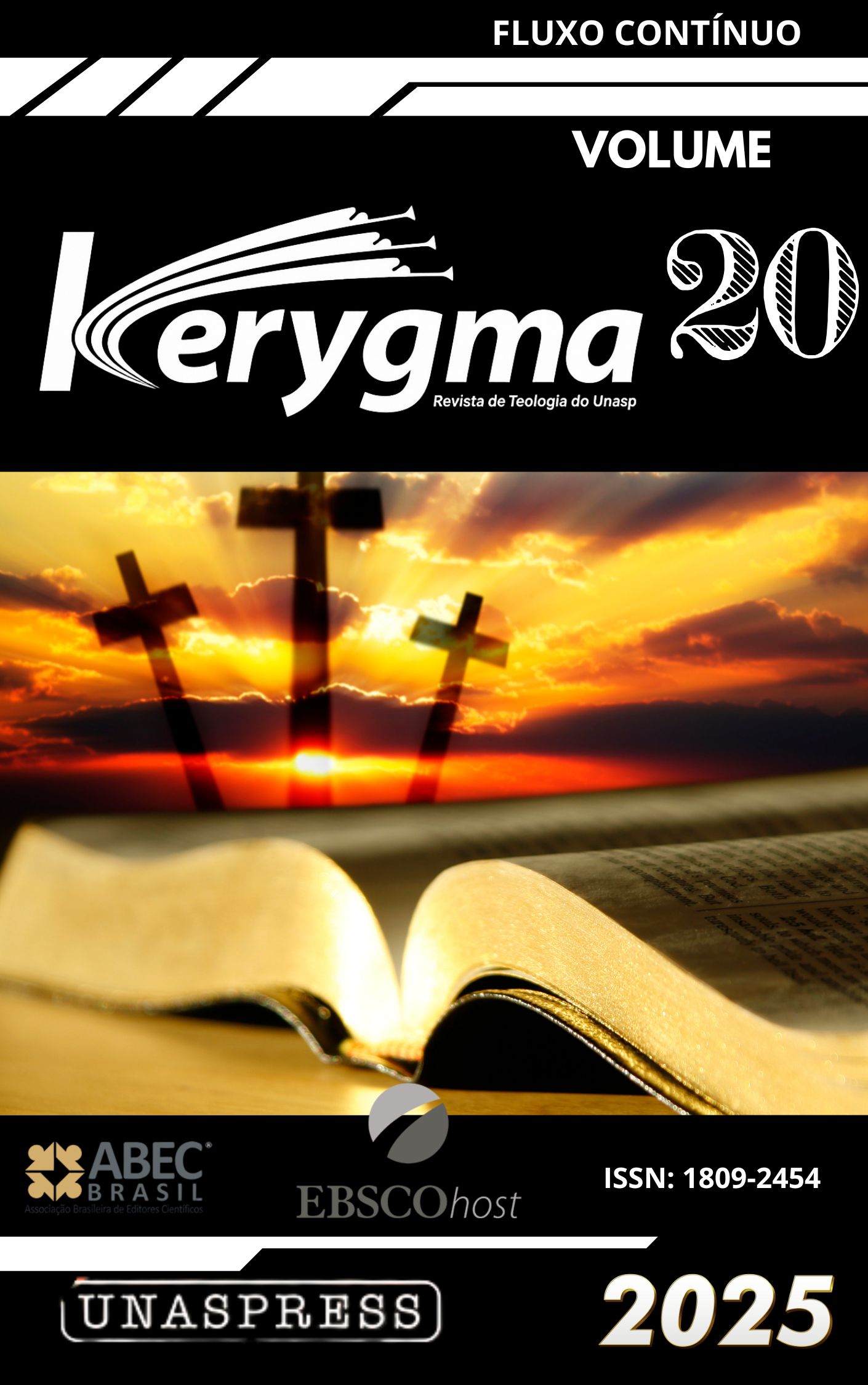Abstract
This article explores the constant presence and significant role of the Holy Spirit in the book of Revelation from a Seventh-day Adventist theological perspective. Although the term "Holy Spirit" is never used in the book, various symbols, metaphors, and allusions highlight His fundamental involvement in the plan of redemption and the life of the Church. The study organizes these references into five categories: explicit mentions, indirect references, possible allusions, implicit inferences, and the angelic representation of Revelation 18:1-3 as a symbolic depiction of the Holy Spirit in the context of the eschatological event known as the "Latter Rain." This interpretation carries significant theological implications, inviting reflection on the broader symbolic presence of the Holy Spirit in Revelation, including other angelic figures that may hypothetically represent His activity. The study sheds light on the harmonious collaboration within the Trinity in the plan of salvation and reaffirms the essential role of the Holy Spirit in strengthening the Church’s mission and its ultimate victory.
References
ARCHER, M.; WADDELL, R. The Spirit in John’s Apocalypse: Vision, Prophecy, Discernment. Pneuma, v. 43, n. 3/4, p. 553-566, 2021.
AUNE, D. E. Revelation 6-16. Nashville: Thomas Nelson, 1998. (Word biblical commentary, v. 52b).
AUNE, D. E. Revelation 17-22. Nashville: Thomas Nelson, 1998. (Word biblical commentary, v. 52c).
BAUCKHAM. R. J. The Role of the Spirit in the Apocalypse. The Evangelical Quarterly, v. 52, n. 2, p. 66-83, 1980.
BRUCE, F. F. The Spirit in the Apocalypse. In: SMALLEY, S. S.; LINDARS, B. (ed.) Christ and Spirit in the New Testament: Studies in Honour of Charles Francis Digby Moule. Cambridge: Cambridge University Press, 1973. p. 333-344.
HENRY, M. Acts-Revelation. New York: Fleming H. Revell Company, 1950. (Matthew Henry’s Commentary on the Whole Bible, v. VI).
KUYKENDALL, M. An Expanded Role for the Spirit in the Book of Revelation. Journal of the Evangelical Theological Society, v. 64, n. 3, p. 527-544, 2021.
LANGE, J. P. The Revelation of John. New York: Charles Scribner’s Sons, 1872.
LEE, H. Y. A Dynamic Reading of the Holy Spirit in Revelation: A Theological Reflection on the Functional Role of the Holy Spirit in the Narrative. Eugene, OR: Wipf & Stock, 2019.
MUELLER, E. O Espírito Santo no Apocalipse de João. In: SIQUEIRA, R.; TIMM, A. R. (org.). Pneumatologia: pessoa e obra do Espírito Santo. Engenheiro Coelho, SP: Unaspress, 2017. p. 321-352.
NICHOL, F. D. (ed.). Seventh-day Adventist Bible Commentary. Hagerstown, MD: Review and Herald, 1980. v. 7.
OSBORNE, G. R. Revelation. Grand Rapids, MI: Baker Academic, 2009. (Baker Exegetical Commentary on the New Testament).
REYNOLDS, E. The Trinity in the Book of Revelation. Journal of the Adventist Theological Society, v. 17, n. 1, p. 55-72, 2006.
RODRÍGUEZ, A. M. The Holy Spirit in Revelation. Adventist World, v. 7, n. 6, p. 26, 2011.
SHEA, W. H. The Mighty Angel and His Message. In: Holbrook, F. B. (ed.). Symposium on Revelation: introductory and exegetical studies. Silver Springs, MD: Biblical Research Institute, 1992, p. 279-325. (Daniel and Revelation Comittee Series, v. 6).
STEFANOVIC, R. Revelation of Jesus Christ: Commentary on the Book of Revelation. 2. ed. Berrien Springs, MI: Andrews University Press, 2009.
SWETE, H. B. The Apocalypse of St. John. Cambridge: Cambridge University Press, 1911.
THOMAS, J. C. Revelation. In: BURKE, T. J.; WARRINGTON, K. (ed.). A Biblical Theology of the Holy Spirit. London: Society for Promoting Christian Knowledge, 2014. p. 536-553.
WADDELL, R. The Spirit of the Book of Revelation. Blandford Forum: Deo Publishing, 2006.
WHITE, E. G. Testimonies to the Church. Mountain View, CA: Pacific Press, 1900. v. 6.
WHITE, E. G. The Great Controversy. Mountain View, CA: Pacific Press, 1911.
WHITE, E. G. Christian Service. Hagerstown, MD: Review and Herald, 1925.
WHITE, E. G. Last Day Events. Boise, ID: Pacific Press, 1992.
WHITE, E. G. The Truth About Angels. Boise, ID: Pacific Press, 1996.
WHITE, E. G. The Desire of Ages. Nampa, ID: Pacific Press, 2018.
WILSON, M. L. The Spirit in Revelation: Explorations in Imagery and Metaphor, Criswell Theological Review, v. 17, n. 1, p. 83-96, 2019.

This work is licensed under a Creative Commons Attribution 4.0 International License.
Copyright (c) 2025 Kerygma

